#MacPherson Suspension Strut
Explore tagged Tumblr posts
Text
Culled Compact (1) - Bruno V @DriventoWrite
When the Second World War had come to an end, recovering, replenishing, rebooting and rebuilding became the order of the day for all countries that had been involved in the conflict. In the USA, one of the largest scale operations was the return to producing automobiles by America’s giant car industry sector, which had been converted to producing guns, tanks, airplanes, trucks and such to supply…
#1940&039;s#Cadet#Compact Saloon#Earle S. MacPherson#GM#MacPherson suspension#MacPherson Suspension Strut
0 notes
Text
BYD Atto 3 Premium: The Smart EV Choice
₹29.85 Lakh General Overview The BYD Atto 3 Premium is a compact electric SUV that combines futuristic design, advanced technology, and sustainability. Targeted at eco-conscious and tech-savvy buyers, it offers a premium driving experience with modern amenities and cutting-edge safety features. Its vibrant color options and sleek design make it an appealing choice. Colors: A diverse palette…
#12.8-inch Touchscreen#360° View Camera#521 km Range#60.48 kWh Battery#7 Airbags#Ambient Lighting#Android Auto#Apple CarPlay#BYD Atto 3 Premium#CN95 Air Filter#DC Fast Charging#Dirac HD Sound#Electric Parking Brake#Electric SUV#family-friendly SUV.#front-wheel drive#MacPherson Strut Suspension#Multi-Link Suspension#Panoramic Sunroof#premium interior#regenerative braking#Smart Connectivity#Spacious boot#Sustainable Mobility#Vehicle-to-Load (V2L)#Wireless charging#Zero Emission Vehicle
0 notes
Text
Understanding Car Suspension System
Introduction Have you ever wondered how your car glides smoothly over potholes and bumpy roads, providing you with a comfortable ride? The answer lies in the suspension system, an essential component of any automobile. This system is designed to absorb shocks and maintain contact between the tires and the road surface, ensuring stability, safety, and comfort during your journey. In this…
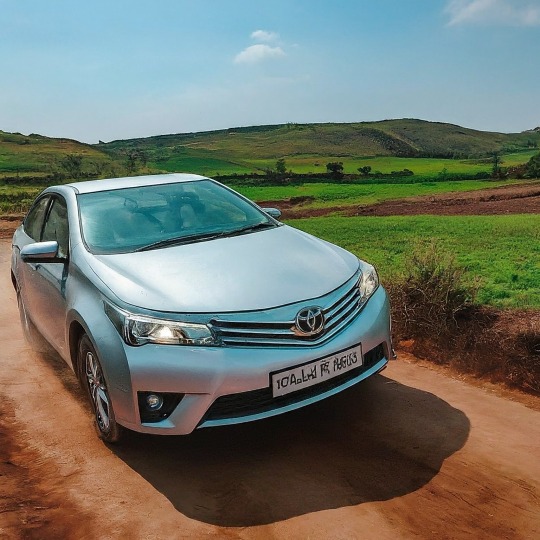
View On WordPress
#Automobiles#Bushes#Dependent Suspension#Independent Suspension#Linkages#MacPherson Strut Suspension#Shock Absorbers#Springs#Struts#Suspension System
0 notes
Text

You can now have your ``big dream in a small car'' in your hands.
MIRA Turbo TR-XX
New release on October 21st.
MIRA Turbo TR-XX SPECIFICATIONS ENGINE: EB-type model, Water-cooled 4-cycle OHC 3-cylinder in line, Transverse (Turbo charged with Intercooler)
MAXIMUM OUTPUT: 52PS/6500rpm
MAXIMUM TORQUE: 7.1kg-m/4000rpm POWER PER LITER: 95PS
FUEL-EFFICIENCY(at the speed of 60km/h): 31km/L
BRAKES: (Front) Boosted Disk Brakes (Rear) Boosted Leading Trailing Brakes SUSPENSION: (Front) MacPherson Strut, Coil Spring (with Stabilizer)
(Rear) Semi-Trailing, Coil Spring TIRES: 145/70 SR 12 Steel Radial
Can the form exceed the specifications?
It has a form that cuts through the wind. Aero tuned mini that achieved a CD value of 0.35. What accelerates this aero body is a powerful muscle with a maximum output of 52PS/6,500rpm and a maximum torque of 7.1kgm/4,000rpm. The newly developed 3-cylinder intercooled turbo engine produces overwhelmingly high power. The TR Double X is now running with the super spec on the super form.
Who will ride it?
A 3-spoke 365 small-diameter urethane steering wheel exclusively for the TR Double X with a fearless racer-like design. A gun grip type shift lever that can be operated quickly and comfortably. Large 2-meter tachometer and speedometer that can be read instantly.
Graphic type turbo indicator. Everything is for sporty running.
It's a cockpit that caters to the finely honed motor skills.
Car component & console box, digital clock optional
Seat set firmly. Boldly protruding side support. In tight corners, the movement of the upper body is reduced, ensuring reliable handling. Finally, there is a bucket-type front seat exclusively for the TR Double X that reduces fatigue on long drives. The Spartan driving performance has made the seat so authentic. Car combo & speaker & console box are optional
21 notes
·
View notes
Photo
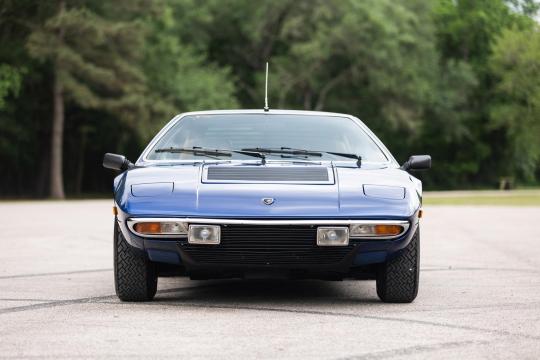
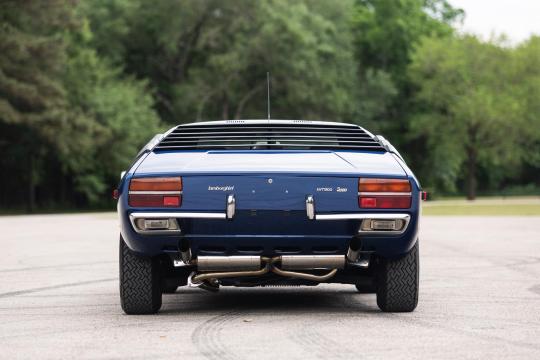

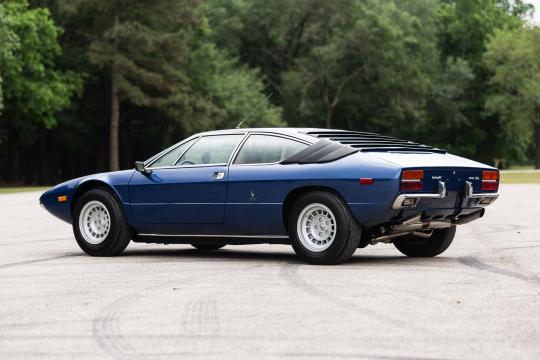
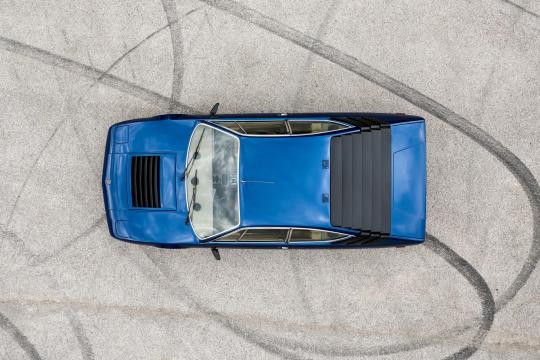
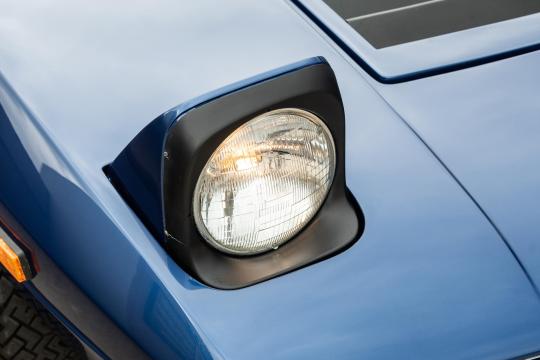
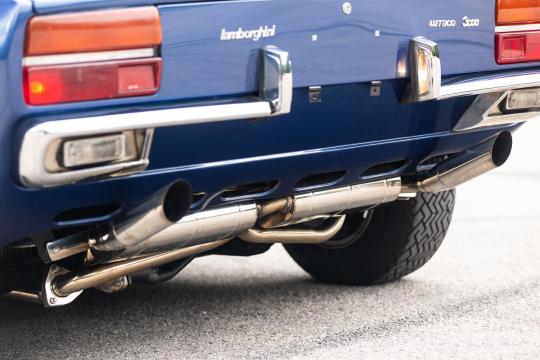
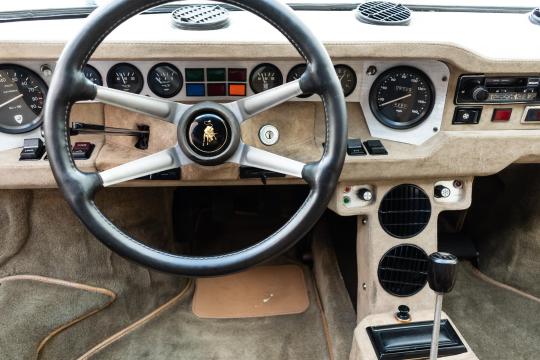
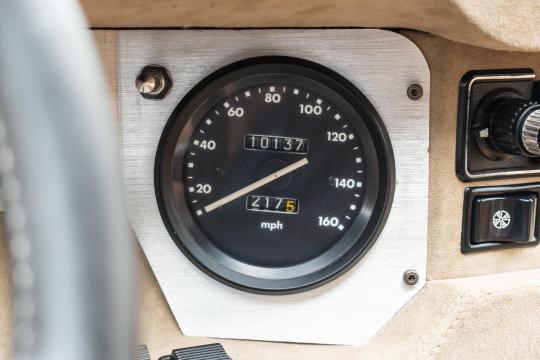
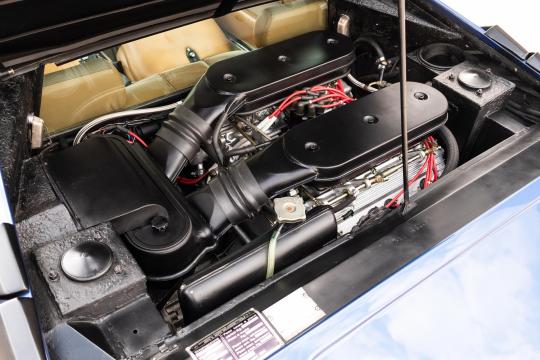
Lamborghini Urraco P300
Despite having been conceptualised as the model to dramatically increase sales and bring Lamborghini greater financial stability, the Urraco P250 proved a commercial flop. Production started in late 1972 following major equipment and floorspace investment. However, by late 1974, less than 500 had been delivered. The Urraco should have gone into production two years earlier than it eventually did. Lamborghini had originally conceived the model with a view to selling over 1000 examples every year.
The disappointing reality left Lamborghini deep in the red, but the Urraco was only partly responsible for a difficult few years.
Compounding the firm’s troubles had been delays for the Countach, a worldwide recession, problems at Lamborghini Trattori and unionised labour, all of which contrived to take their toll on the company founder. In 1972, Ferruccio Lamborghini had sold his tractor company along with 51% of his motor car business. He cashed out of the final 49% in 1974 when the world was in the midst of an energy crisis that slashed demand for gas guzzling machinery.
Throughout this tumultuous period, development work continued on the Urraco. It mainly focused on the Paolo Stanzani-designed V8 engine that had been created especially for the new model at considerable expense. In November 1974, an uprated Urraco P300 was launched at the Turin Motor Show. It immediately went into production alongside the Countach LP400, Espada Series 3 and Jarama S.
Most significantly, the Urraco P300 came with an enlarged three-litre engine. Equally importantly, the power unit now incorporated dual instead of single overhead camshafts.
To take capacity up to three-litres, Paolo Stanzani’s all-alloy 90° V8 was stroked from 53mm to 64.5mm. Bore went unchanged at 86mm for an overall displacement of 2997cc (an increase of 534cc). Compression was dropped from 10.5:1 to 10.0:1. Four new Weber 40 DCNF twin-choke downdraught carburettors were installed to replace the old 40 IDF 1s used previously.
The consequence of these improvements was a dramatic jump in output. Peak power was up 40bhp to 260bhp at an otherwise unchanged 7500rpm. The torque rating also rose considerably; 195lb-ft was now on tap at 3500rpm compared to 166lb-ft at 5750rpm for the P250.
As before, ignition was via two Marelli coils and a single Marelli distributor.
Lamborghini’s five-speed manual gearbox was beefed up to cope with the increased power and torque. Transmission was via a single dry-plate clutch and Lamborghini differential. New damper settings improved the ride, but otherwise little was changed to the existing platform The P300 was based on the same steel monocoque body shell as its predecessor. The engine was housed transversely like the Miura.
Suspension was independent all-round with MacPherson struts, coil springs and telescopic shocks. Anti-roll bars were fitted at either end The twin circuit brake system incorporated unchanged 278mm ventilated Girling discs. Campagnolo’s handsome five-bolt cast magnesium wheels were retained. They measured 7.5 x 14-inches and originally came shod with Michelin XWX tyres.
An 80-litre fuel tank was fitted in the engine bay.
Visually, the only change made to the P300 Urraco was a switch from a two-bank to six-bank radiator cooling vent on the front lid. The rest of Marcello Gandini’s soft wedge creation was unaltered.In a decade not exactly renowned for design longevity, the Urraco proved somewhat timeless. Compared to Bertone’s other mid-engined 2+2, the Ferrari Dino 308 GT4, the baby Lamborghini aged very well, even though it was ultimately outsold by the Maranello product by five to one.Build quality was considerably improved over earlier examples and nowhere was this more apparent than in the cockpit.Bertone had originally been responsible for furnishing the bodyshells, but by the time the P300 was on stream, this work had been taken in-house.
Lamborghini used better quality materials and ensured a higher standard of fit and finish.To this end, P300s were generally equipped with full leather interiors instead of the often garish two-tone leather and fabric combinations seen earlier.
The full width dash layout was still just as haphazard though. The rev counter and speedometer were located at either end of the instrument binnacle and angled in towards the driver. Supplementary gauges and various rocker switches were housed in between.
Lamborghini’s unusual deep dish steering wheel with its four arced horizontal spokes and leather rim was also retained. Like the P250 (which remained in production for a few months longer to use up an overstock of parts), the only update was the gradual shift to anodised black bumpers, wipers and window frames. A more conventional three-spoke steering wheel was also introduced towards the end of production.
#Lamborghini Urraco P300#Ferruccio Lamborghini#Countach LP400#Espada#Jarama S#Miura#Ferrari Dino 308 GT4#Bertone
176 notes
·
View notes
Text
What Suspension System Does Porsche Use? A Detailed Overview
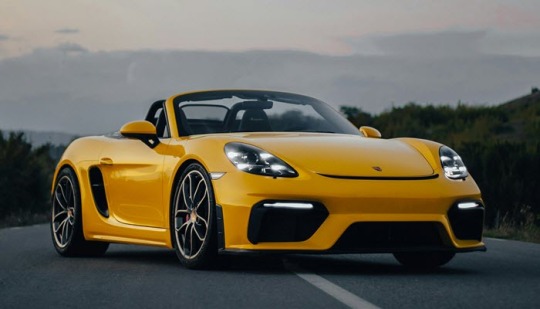
Porsche has built a reputation for high-performance vehicles with a focus on precision engineering. One of the critical components that contribute to Porsche's superior driving dynamics and handling is its suspension system. The suspension is responsible for providing comfort, stability, and control, particularly in high-performance and sports cars like those from Porsche. This article delves into the suspension systems used by Porsche, focusing on the specific components, technology, and performance characteristics that define their vehicles.
1. Porsche's Suspension Philosophy
At the core of Porsche's suspension philosophy is the balance between performance and comfort. The company has engineered a range of suspension systems that provide optimal handling without compromising ride quality. The suspension systems are designed to ensure that Porsche vehicles remain agile and responsive, whether on the track or the road.
2. MacPherson Strut Suspension
The MacPherson strut suspension system is one of the most widely used suspension configurations in Porsche vehicles, particularly in the front axles of many of their models. The system was initially designed for compact cars due to its relatively simple design and cost-effectiveness, but Porsche has adapted it for high-performance applications.
Key Features of MacPherson Strut:
Strut Assembly: The key component is the strut, which integrates the spring, damper, and steering mechanism into one unit.
Simplified Geometry: The MacPherson strut allows for a more compact and lighter suspension design, which contributes to Porsche's low center of gravity and better handling.
Cost-Effective and Efficient: Despite being relatively simple, it offers excellent performance, making it an ideal choice for Porsche’s production cars.
The MacPherson strut suspension is found on models such as the Porsche 911 (particularly on earlier models and the 718 Cayman), where its balance of weight, cost, and handling makes it an efficient solution for everyday performance.
3. Double Wishbone Suspension
For Porsche's higher-performance models, including some variants of the Porsche 911, 918 Spyder, and the Cayenne, a double wishbone suspension system is employed, especially on the rear axles.
Key Features of Double Wishbone:
Precise Control: The double wishbone design uses two control arms, which provide better control over the wheel's movement compared to the simpler MacPherson strut.
Improved Handling: This system allows for more precise control of camber angles, improving the vehicle's handling at high speeds or when cornering.
More Complex Geometry: The double wishbone suspension is more complex and expensive to manufacture, but it offers superior handling characteristics, particularly in racing and high-performance driving.
This type of suspension offers higher precision and better performance under extreme driving conditions. It also provides a smoother ride under dynamic conditions, especially in cornering situations.
4. Porsche Active Suspension Management (PASM)
Porsche takes its suspension technology a step further with the inclusion of Porsche Active Suspension Management (PASM), a system that electronically adjusts the damping force of the shock absorbers in real-time. PASM provides drivers with the ability to switch between different driving modes that offer either a more comfortable ride or a stiffer, performance-oriented setup.
Key Features of PASM:
Adaptive Dampers: PASM features electronically controlled dampers that adjust to road conditions and driving behavior, ensuring optimal performance and comfort at all times.
Multiple Modes: The system includes different settings such as Normal, Sport, and Sport Plus, each of which tunes the suspension for different driving conditions.
Improved Handling and Comfort: PASM adjusts the suspension to enhance handling during high-speed cornering or provide a more comfortable ride when cruising on the highway.
This system is found on models like the Porsche 911, Panamera, and Cayenne, enhancing the versatility of the suspension system while maintaining Porsche's performance pedigree.
5. Porsche Dynamic Chassis Control (PDCC)
In models such as the Porsche 911 Turbo, Cayenne, and Panamera, Porsche uses its advanced Porsche Dynamic Chassis Control (PDCC) system. PDCC is an active anti-roll system designed to reduce body roll during high-performance driving.
Key Features of PDCC:
Hydraulic Stabilizer Bars: The PDCC system uses hydraulic stabilizer bars to actively adjust the level of roll stiffness on each axle independently. This helps reduce body roll during aggressive cornering, maintaining optimal contact between the tires and the road.
Active Stabilization: By reducing roll, PDCC enhances stability during cornering, improving cornering grip and overall handling.
Performance and Comfort: While PDCC enhances performance, it also improves comfort by providing a more controlled ride when driving over uneven surfaces.
The system is particularly beneficial for larger models like the Cayenne and Panamera, as it enables them to handle more like sports cars, despite their size and weight.
6. Porsche's Air Suspension System
On models like the Porsche Cayenne and Panamera, an air suspension system is offered as an option. This system utilizes air springs instead of traditional coil springs, providing several advantages, including the ability to adjust the ride height and stiffness of the suspension.
Key Features of Air Suspension:
Variable Ride Height: Air suspension allows the vehicle's ride height to be adjusted, which can be beneficial for off-road driving (in the case of the Cayenne) or for lowering the vehicle to improve aerodynamics at high speeds.
Enhanced Comfort: The system can be tuned for an incredibly smooth and comfortable ride, absorbing road imperfections more effectively than conventional coil-spring suspension systems.
Dynamic Adjustments: Air suspension can adjust to different driving conditions in real-time, offering the flexibility of a sportier or more comfortable ride as needed.
This system provides greater flexibility and comfort, especially in larger vehicles like the Panamera and Cayenne, where ride quality can be critical.
7. Porsche's Race-Inspired Suspension: The 918 Spyder and 911 GT3
Porsche's engineering prowess extends into its race-inspired suspension systems, as seen in the 918 Spyder and the 911 GT3. These vehicles utilize advanced suspension components, such as the multi-link suspension system, combined with the Porsche Active Suspension Management (PASM) and dynamic roll stabilization systems for track-worthy performance.
Race-Focused Features:
Multi-Link Suspension: Used in the rear of the 918 Spyder, this system provides improved handling and traction under high-performance driving conditions.
PASM and PDCC: Combined with systems like PASM and PDCC, these vehicles deliver maximum control and stability at the limits of performance.
Conclusion
Porsche’s suspension systems are carefully engineered to meet the high-performance standards expected from the brand while balancing comfort and drivability. From the MacPherson strut found in many of its vehicles to the advanced Porsche Dynamic Chassis Control and air suspension systems, Porsche offers an array of solutions designed to optimize handling, comfort, and driving dynamics. Whether for everyday use or extreme performance on the track, Porsche’s suspension technology continues to define the driving experience, cementing the brand's reputation for excellence in engineering and innovation.
#porsche car#porsche suspension service#porsche maintenance#porsche suspension problem#porsche service center
0 notes
Text

2025 Chrysler Pacifica Review
The 2025 Chrysler Pacifica is a versatile and stylish family minivan offering innovative features for both comfort and convenience. It's the ideal vehicle for modern families with a sleek design, advanced technology, and various customization options. Experience a smooth, connected ride with the Pacifica's exceptional performance.
Walkthrough Review
Interior
The 2025 Chrysler Pacifica offers a versatile and spacious interior for people and cargo. It provides ample storage options with 243 seating configurations and removable/foldable seats. Its Class-Exclusive available Stow' n Go Seating and Storage System allows the second and third-row seats to fold flat into the floor, creating more storage space and offering 340 litres of concealed storage when the seats are upright. The Pacifica also includes the RIDGID-powered Stow' n Vac with a retractable hose and specialized tools for effortless cleanup. The Pinnacle trim features luxurious quilted sepia Nappa leather-trimmed seats with two-mode ventilation, a suede headliner, and a soft-touch instrument panel with accent stitching, ensuring a sophisticated and comfortable cabin experience.
Exterior
The 2025 Chrysler Pacifica is designed to make family adventures stylish and practical. Available in white, red, and black, the Pacifica Family Adventure Vehicle stands out with exclusive 18-inch Black wheels, black roof rails, a Thule cargo carrier, blacked-out accents, and Mopar all-weather floor mats. A diamond-shaped 3D grille enhances its sleek design, the signature Chrysler wing, LED headlamps, and a full-width light bar, all complemented by standard 17-inch wheels and LED taillamps. For added convenience, the Pacifica offers hands-free power sliding side doors, activated by a simple foot swipe, and a power liftgate that can be controlled via the key fob. Additionally, the Pacifica provides a range of wheel options, from standard 17-inch to available 20-inch wheels with a foreshadow finish, ensuring a refined look for every family journey.
Performance
The 2025 Chrysler Pacifica delivers exceptional performance with its 3.6L Pentastar VVT V-6 engine, producing 287 horsepower and 262 lb-ft of torque. Standard across all models, this engine offers a Best-In-Class towing capacity of up to 3,600 lbs. It also ensures remarkable fuel efficiency with an impressive highway economy rating of 8.4 L/100 km. Paired with a nine-speed automatic transmission, the Pacifica achieves swift acceleration and smooth handling, enhancing overall driving dynamics. A combination of robust powertrain, MacPherson strut front suspension, independent rear suspension, and Electronic Stability Control provides a stable and responsive ride. Additionally, the Engine Stop/Start technology minimizes fuel consumption by halting the engine at stops, seamlessly restarting as soon as the brake pedal is released.
Contact Us
Explore the innovative 2025 Chrysler Pacifica at Countryside Chrysler! Whether you're searching for the latest 2025 Chrysler Pacifica review, details on the Chrysler Pacifica price, or want to find a Chrysler Pacifica for sale, we're here to help. Visit your trusted Chrysler dealership near me for personalized assistance, expert advice, and competitive pricing. Contact us today to schedule your test drive!
1 note
·
View note
Text


2025 Honda Civic Si Review: Performance, Tech, and Value
The 2025 Honda Civic Si is a performance-oriented compact sedan featuring a 200-horsepower turbocharged 1.5-litre engine and a six-speed manual transmission. With a sport-tuned suspension and limited-slip differential, it delivers dynamic handling. It offers advanced tech, including wireless Apple CarPlay and Android Auto for seamless connectivity.
Walkthrough Review
Interior
The 2025 Honda Civic Si combines performance with comfort, ensuring an exhilarating driving experience. Inside, the meticulously crafted cabin features bold red accents that complement the black and red Si Sport seats, elevating the sporty aesthetic. The red contrast stitching on the steering wheel, doors, and shifter constantly reminds you of the car's dynamic design. For enhanced comfort, the Civic Si includes a heated leather-wrapped steering wheel and heated front and rear seats, providing warmth and luxury for both driver and passengers. This interior creates an immersive environment, blending performance and comfort seamlessly.
Exterior
The 2025 Honda Civic Si exudes sporty sophistication with design elements that command attention. Exclusive Si badging, sleek lines, and a dual chrome tailpipe finisher create a striking rear aesthetic that leaves a lasting impression. The 18-inch aluminum alloy wheels with all-season tires ensure performance-ready traction on any surface. Adding to its dynamic profile, the gloss black trunk-mounted spoiler enhances downforce for superior stability and handling at higher speeds. Inside, aluminum-trimmed sport pedals offer a tactile connection to the road, amplifying the thrill of every drive.
Performance
The 2025 Honda Civic Si is built for driving enthusiasts. It is powered by a 1.5-litre turbocharged 4-cylinder engine delivering up to 200 horsepower and 192 lb-ft of torque. This performance-oriented sedan offers an exceptionally responsive driving experience thanks to its short-throw 6-speed manual transmission with rev-match control. The Drive-by-Wire Throttle System optimizes throttle control based on key driving data for smoother acceleration. With its MacPherson strut front suspension and independent multi-link rear suspension, the Civic Si ensures enhanced stability, making it agile and confident through every curve and corner.
Contact Us
Experience the thrilling 2025 Honda Civic Si at Midtown Honda! Whether you're searching for a comprehensive 2025 Honda Civic Si review, exploring the latest Honda Civic Si price, or looking for a Honda Civic Si for sale, we've got you covered. Visit your trusted Honda dealership near me to discover this sporty model firsthand. Contact Midtown Honda today to schedule your test drive or learn more!
1 note
·
View note
Text
youtube
The suspension system is one of the most vital components of your vehicle, but how does it work? In this video, we explore the role of the suspension system in enhancing ride comfort, handling, and stability. From isolating road shocks to maintaining tire contact, it does much more than you might think! We also break down the various types of suspension systems, including Dependent Suspension, Solid Axle Suspension, and Independent Suspension.
Learn about the MacPherson Strut, Double Wishbone, Multi-Link, and Air Suspension systems and their unique benefits and applications in everyday vehicles and heavy-duty machines. Whether you're curious about how suspension impacts your car's performance or just want to understand the basics, this video has you covered.
If you’re interested in speaking with our experts from Scania, Mercedes, and Nissan, and scheduling a personalized career plan, call us at +91-9342691281 or register here: https://bit.ly/3DSNQp8
#CarSuspension#AutomotiveEngineering#VehicleDynamics#SuspensionSystem#IndependentSuspension#AirSuspension#DoubleWishbone#MacPhersonStrut#RideComfort#CarHandling#VehiclePerformance#SkillLync#youtube#mechanicalengineering#CFD#cfd simulation#Youtube
0 notes
Text
Earl MacPherson and the MacPherson Strut Suspension System
Earl MacPherson, an American automotive engineer, is best known for designing the MacPherson strut, a key component in modern vehicle suspension systems. His invention revolutionized car suspension design due to its simplicity, cost-effectiveness, and performance advantages. Who was Earl MacPherson? Earl S. MacPherson (1891–1960) had a background in mechanical engineering, and he worked for…
0 notes
Text
The latest Toyota Yaris 1.5 G AT price in the Malaysian market starts at RM 91,600. The Yaris 1.5 G AT is a versatile and efficient model with a monthly instalment of RM 952 for 84 months and a down payment of RM 18,300. This vehicle is equipped with a 1.5L petrol engine, an in-line 4 cylinder with a 16 valve DOHC configuration, delivering a power output of 106 hp at 6000 RPM and a torque of 140 Nm at 4200 RPM. The engine displacement is 1496 cc, making it a robust choice for various driving needs. It features power steering with a tilt steering column and a rack and pinion steering gear type, along with an adjustable steering column and electric power steering type. The chassis control systems include ventilated discs for the front brake and discs for the rear brake, complemented by a MacPherson strut front suspension and a torsion beam rear suspension. The gearbox is a CVT type with variable speed. The Yaris 1.5 G AT rides on 16-inch alloy wheels with 195/50 R16 radial tyres and has a spare tyre of the same size and material. The car's dimensions include a length of 4140 mm, a width of 1730 mm, a height of 1475 mm, a wheelbase of 2550 mm, a front tread of 1460 mm, and a rear tread of 1445 mm, with a kerb weight of 1140 kg. It features a seating capacity of 5 seats, a turning radius of 5.1 meters, and a fuel tank capacity of 42 liters. This model offers a range of standard features making it an attractive option for those seeking reliability and performance in a compact car. Your question is: Toyota Yaris 1.5 G AT? Which question will you have about this car? Let’s justify these. There, we are including the major questions and answers about this car. So, let’s start now. What is the monthly instalment for the Yaris 1.5 G AT? The monthly instalment for the Yaris 1.5 G AT is RM 952 over a period of 84 months. How much is the down payment for the Yaris 1.5 G AT? The down payment required for the Yaris 1.5 G AT is RM 18,300. What is the price of Toyota Yaris 1.5 G AT? The latest Toyota Yaris 1.5 G AT price in the Malaysian market starts at RM 91,600. What are the engine specifications of the Yaris 1.5 G AT? The Yaris 1.5 G AT features a 1.5L petrol engine with an in-line 4 cylinder and 16 valve DOHC configuration, delivering 106 hp at 6000 RPM and 140 Nm torque at 4200 RPM. What type of transmission does the Yaris 1.5 G AT have? The Yaris 1.5 G AT is equipped with a CVT (Continuously Variable Transmission) gearbox. What is the fuel tank capacity of the Yaris 1.5 G AT? The Yaris 1.5 G AT has a fuel tank capacity of 42 liters. How many seats does the Yaris 1.5 G AT have? The Yaris 1.5 G AT can comfortably seat up to 5 passengers. What are the braking and suspension systems in the Yaris 1.5 G AT? The Yaris 1.5 G AT features ventilated discs for front brakes, discs for rear brakes, a MacPherson strut front suspension, and a torsion beam rear suspension. Advantages and Disadvantages AdvantagesDisadvantagesFuel-efficient 1.5L petrol engineRelatively high down paymentComfortable seating for 5 passengersLimited fuel tank capacity (42 liters)Modern CVT gearbox for smooth drivingModerate power output (106 hp)Compact size suitable for urban drivingBasic wheel size and tyre optionsAdvanced braking and suspension systemsNo wheel covers includedElectric power steering for ease of handlingTurning radius could be smallerAdjustable steering column for driver comfortKerb weight could be lighter
0 notes
Text

The Strongest, Fastest, Latest New Model - Dengeki Impression
Lancer Evolution III
Full disclosure of WRC specifications
All the conditions to beat the rival!
Lan Evo's participation in the WRC will be the Safari Rally, which will be held from April 6th. No WRC title is on the line for this year's Safari. Kenjiro Shinozuka entered there driving a machine. Of course, the rival will be Yoshiro Fujimoto of STI85 Celica. The odds are 50/50. The weak point is the team, which operates with one-tenth the number of people at TTE.
Winning with one-tenth the number of staff is the potential of the machine and the technique of the driver.
click becomes important. One of them
The potential of the machine is completely finished as one of the best in the WRC world. A misfiring system (a device that pressurizes even if the accelerator is turned off with a turbo engine), which is not installed on the Evo II, is added, and it is said that this will increase the speed per kilometer-second.
________________________________________________
A rally journalist sees it this way Toshiyuki Iijima
Although it is behind Toyota and Subaru in terms of winning the WRC championship, it can be said that Lancer is the one to overthrow the points of these two companies. There is a very high possibility that either Toyota or Subaru will lose points and get severely burned due to Lancer's success.
Lancer Evolution III is fast. It will be a big hit after debut. Every event you participate in has a chance to win.
Even the Asia-Pacific players will be in a deadly battle with the Impreza in a marketing showdown in Asia.
_______________________________________________
PIC CAPTIONS
Shinoken, K. Ericsson, and others are aiming for the world's champ and are thoroughly pursuing their runs. This year, the top spot on the podium is just around the corner
WRC Mitsubishi that dropped the product
N is becoming more fearless. This form is the result of our pursuit of speed!
The transmission is an X-track 6th gear. Reliable operability in the rally field is emphasized...
It becomes a cockpit devoted to driving functions. It's also fun to buy an RS and finish the WRC machine in the image!
299 horsepower is the rule of power display. In fact, it seems to generate 370 to 400 horsepower.
Keep an eye on Shinoken and Ericsson's performance this year
________________________________________________
SPEC BOX
Lancer Evolution III WRC Spec
full length(mm) 4310
Width(mm) 1695
Height (mm) 1400
Wheelbase (mm)2510
Vehicle weight (kg) 1200+
Transmission X-track 6 speed
Engine Straight 4 DOHC turbo
Displacement(cc) 1997
Bore x Stroke (mm) 85.0X88.0
Compression ratio 8.5
Maximum output(ps/rpm) 299/6250
Maximum torque (kgm/rpm) 45.0/4000
Suspension(F)macpherson strut
Suspension(R)multi link
Brake(F)Ventilated disc
Brake(R)Ventilated disc
Steering Rack-and-pinion
Tire Michelin
5 notes
·
View notes
Text
Understanding Suspension Systems and Their Components: The Backbone of Vehicle Comfort and Control

A vehicle’s suspension system is crucial for ensuring a smooth ride, maintaining control, and enhancing safety. This blog delves into the intricacies of suspension systems, exploring their types, components, and the importance of regular maintenance.
The Basics of Suspension Systems
How Suspension Systems Work
A suspension system is designed to maximize the friction between the tires and the road surface, providing steering stability with good handling and ensuring passenger comfort by absorbing and damping shock loads from road conditions.
Main Functions
Support Weight: Suspension supports the weight of the vehicle.
Absorb and Dampen Shocks: Reduces the impact of road irregularities.
Maintain Tire Contact: Ensures that tires remain in contact with the road for optimal traction.
Control Vehicle Direction: Facilitates proper handling and steering stability.
Key Components of Suspension Systems
Springs
Springs are the primary component that absorbs energy from bumps and dips in the road.
Coil Springs: Common in most vehicles, they compress and expand to absorb shock.
Leaf Springs: Typically found in trucks and heavy vehicles, consisting of layers of metal bound together.
Torsion Bars: Use twisting motion to absorb impact, often used in front suspensions.
Air Springs: Use air pressure to provide a smooth ride, commonly found in luxury vehicles.
Shock Absorbers (Dampers)
Shock absorbers dampen the oscillations from the springs, preventing excessive bouncing.
Hydraulic Shocks: Use hydraulic fluid to absorb shock energy.
Gas-Charged Shocks: Incorporate gas to reduce aeration and improve performance.
Struts: Combine a shock absorber with a coil spring in one unit, often used in front suspensions.
Control Arms
Control arms connect the suspension to the vehicle’s frame, allowing for controlled motion and support.
Upper and Lower Control Arms: Provide pivot points for the suspension to absorb vertical motion.
A-Arms: Shaped like an “A,” these are used to ensure stability and support.
Ball Joints
Ball joints act as pivot points between the control arms and the wheels, allowing for smooth steering and suspension movement.
Stabilizer Bar (Anti-Roll Bar)
The stabilizer bar reduces body roll during cornering, connecting opposite wheels through short lever arms linked by a torsion spring.
Bushings
Bushings are rubber or polyurethane components that absorb shock and reduce vibration between metal parts.
Types of Suspension Systems
Independent Suspension
Each wheel on the same axle moves independently, providing better ride quality and handling.
MacPherson Strut: A common type of independent suspension for front wheels.
Double Wishbone: Offers excellent handling, used in performance and luxury vehicles.
Dependent Suspension
Wheels are linked, so movement on one side affects the other.
Solid Axle: Common in trucks and heavy-duty vehicles for durability and load-carrying capacity.
Semi-Independent Suspension
A compromise between independent and dependent suspensions, providing a balance of performance and cost.
Importance of Suspension Maintenance
Regular suspension maintenance is essential for vehicle safety, comfort, and performance. Key maintenance tasks include:
Inspecting and Replacing Worn Components: Regularly check and replace worn shocks, struts, and bushings.
Wheel Alignment: Ensure wheels are properly aligned to prevent uneven tire wear and handling issues.
Checking Tire Pressure and Wear: Proper tire maintenance can significantly impact suspension performance.
Lubricating Moving Parts: Keeps the suspension components working smoothly.
Signs of Suspension Problems
Excessive Bouncing: Indicates worn shocks or struts.
Nose Dives or Rear Squats: Suggests suspension issues when braking or accelerating.
Uneven Tire Wear: May point to alignment or suspension component problems.
Pulling to One Side: Could indicate issues with control arms or alignment.
Steering Difficulties: May be caused by worn suspension parts or alignment issues.
Conclusion
A well-maintained suspension system is crucial for vehicle safety, comfort, and performance. Understanding how your suspension works, recognizing signs of trouble, and performing regular maintenance can ensure a smoother ride and better handling. Keep your suspension system in top shape to enjoy a safer and more comfortable driving experience.
Regular checks and prompt repairs not only enhance the longevity of your vehicle but also ensure that every ride is smooth, controlled, and enjoyable.
0 notes
Text
Best Strut Spring Compressors: Safely Fix Your Suspension
Best Strut Spring Compressors: Safely Fix Your Suspension When fixing your vehicle’s suspension, one essential tool is a strut spring compressor. It aids in reducing the size of your springs, making them easier to remove. However, handling springs can be dangerous, so finding a sturdy, durable tool is crucial. Let’s explore some of the best options:Get more news about Best Spring Machine,you can vist our website!
OEMTOOLS MacPherson Strut Spring Compressor This product compresses most MacPherson strut springs. It locks into place, includes built-in detent pins, and features forged hooks, a hardened center screw, a heat-treated forcing screw, and safety latches. Pros: Robust, affordable, easy to use, and safety pins keep everything locked in place. Cons: Not suitable for every vehicle; intended for small cars and light-duty suspension. Shankly Coil Spring Compressor Tool A drop-forged enamel coil spring compressor suitable for various passenger and light commercial vehicles. Features double-ended jaws and security hooks for extra safety. Pros: Sturdy, well-made, works well, and budget-friendly. Cons: Rods may flex under pressure (common) and not compatible with all vehicle types. Branick Strut Spring Compressor Considered “the standard in the industry.” All-steel, premium product that doesn’t require adapters and uses heavy-duty acme thread. Versatile mounting options and multi-position hooks. Pros: Handles heavy coil-over-shocks on light trucks and SUVs, longer handles for extra torque, and easy compression. Cons: Expensive; best suited for serious DIY mechanics. Benefits of Strut Spring Compressors Safety: Even when lifted off the ground, suspension springs can still carry significant energy. A spring compressor helps control decompression safely. Cost Savings: Performing your own automotive repairs saves money compared to taking your car to a repair shop. Custom Tuning: Car enthusiasts and part-time racers enjoy tuning their vehicles using these tools.
0 notes
Text
Suspension Solutions: Elevating Your Mini Cooper's Ride with Expert Service
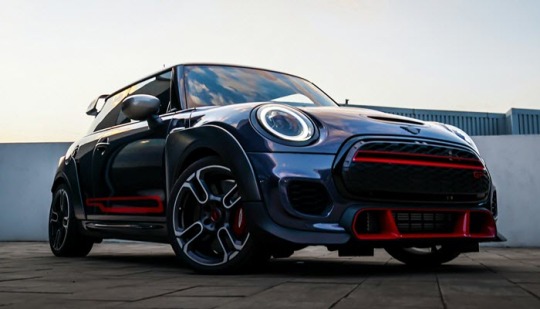
Elevating the driving experience of your Mini Cooper goes beyond its stylish design and zippy performance. A crucial aspect often overlooked is the suspension system, which directly impacts ride comfort, handling, and safety. In this article, we delve into the intricacies of Mini Cooper suspension service, exploring how expert maintenance can transform your driving experience.
Understanding Mini Cooper Suspension:
Before delving into service solutions, it's essential to grasp the fundamentals of your Mini Cooper's suspension system. Mini Coopers are renowned for their nimble handling and responsive steering, attributes largely attributable to their sophisticated suspension setup. From MacPherson struts to multi-link rear suspensions, each component plays a pivotal role in delivering a balanced and engaging driving experience.
Signs of Suspension Issues:
Recognizing the signs of suspension problems is the first step towards addressing them effectively. Common indicators include excessive bouncing or bottoming out, uneven tire wear, steering wheel vibration, and a noticeable decrease in ride comfort. If you notice any of these symptoms, it's crucial to schedule a suspension inspection promptly to prevent further damage and ensure optimal performance.
Comprehensive Suspension Inspection:
A thorough suspension inspection is the cornerstone of effective service. Qualified technicians will assess various components, including shocks, struts, springs, control arms, and bushings, for signs of wear, damage, or fluid leaks. Utilizing specialized tools and diagnostic equipment, they can pinpoint the root cause of any issues and recommend appropriate solutions tailored to your Mini Cooper's specific model and driving needs.
Shock and Strut Replacement:
Shocks and struts play a critical role in stabilizing your Mini Cooper's ride and absorbing road imperfections. Over time, they can degrade due to normal wear and tear, resulting in diminished ride quality and compromised handling. A skilled technician will replace worn shocks and struts with high-quality replacements, restoring your Mini Cooper's stability, control, and comfort.
Spring Inspection and Adjustment:
The springs in your Mini Cooper's suspension system provide support and help absorb bumps and vibrations from the road. During a suspension service, technicians will inspect the condition of the springs and adjust them as needed to restore proper ride height and weight distribution. This ensures optimal handling and minimizes the risk of bottoming out or sagging, preserving your Mini Cooper's dynamic driving characteristics.
Control Arm and Bushing Maintenance:
Control arms and bushings connect various suspension components and play a crucial role in maintaining stability and alignment. Over time, these components can wear out or develop excessive play, leading to noise, vibration, and poor handling. Technicians will inspect control arms and bushings for signs of wear and replace them if necessary, restoring precision steering and handling responsiveness.
Alignment and Tire Balancing:
Proper wheel alignment and tire balancing are essential for ensuring even tire wear, optimal handling, and a smooth ride. During a suspension service, technicians will perform a comprehensive alignment check and adjust the camber, caster, and toe angles to factory specifications. Additionally, they will balance the tires to eliminate vibrations and extend tire life, enhancing overall driving performance and safety.
Performance Upgrades and Customization:
For Mini Cooper enthusiasts seeking to enhance their vehicle's performance and handling, suspension upgrades and customization options abound. From sport-tuned coilover kits to adjustable sway bars and strut tower braces, aftermarket upgrades can transform your Mini Cooper into a corner-carving machine. Knowledgeable technicians can recommend and install upgrades tailored to your driving style and preferences, elevating your Mini Cooper's ride to new heights.
Conclusion:
Your Mini Cooper's suspension system is a complex network of components that directly impact its ride quality, handling, and safety. By investing in expert suspension service, you can address issues promptly, restore optimal performance, and elevate your driving experience. Whether it's replacing worn shocks and struts, adjusting springs, or upgrading to performance-enhancing components, a skilled technician can help unleash the full potential of your Mini Cooper, ensuring every drive is a thrilling adventure.
#mini cooper#mini cooper suspension#mini cooper service center#mini cooper services#mini cooper mechanic
0 notes
Text
Automotive Suspension System Market To Witness the Highest Growth Globally in Coming Years

The report begins with an overview of the Automotive Suspension System Market and presents throughout its development. It provides a comprehensive analysis of all regional and key player segments providing closer insights into current market conditions and future market opportunities, along with drivers, trend segments, consumer behavior, price factors, and market performance and estimates. Forecast market information, SWOT analysis, Automotive Suspension System Market scenario, and feasibility study are the important aspects analyzed in this report.
The Automotive Suspension System Market is experiencing robust growth driven by the expanding globally. The Automotive Suspension System Market is poised for substantial growth as manufacturers across various industries embrace automation to enhance productivity, quality, and agility in their production processes. Automotive Suspension System Market leverage robotics, machine vision, and advanced control technologies to streamline assembly tasks, reduce labor costs, and minimize errors. With increasing demand for customized products, shorter product lifecycles, and labor shortages, there is a growing need for flexible and scalable automation solutions. As technology advances and automation becomes more accessible, the adoption of automated assembly systems is expected to accelerate, driving market growth and innovation in manufacturing. Automotive Suspension System Market Size, Share & Industry Analysis, By Suspension Type (Macpherson Strut, Multilink Suspension, Air Suspension), By System Type (Passive Suspension, Semi Active Suspension, Active Suspension), By Actuation Type (Hydraulically Actuated Suspension, Electronically Actuated Suspension), By Vehicle Type (Passenger Cars Light Commercial Vehicle) Others and Regional Forecast, 2021-2028
Get Sample PDF Report: https://www.fortunebusinessinsights.com/enquiry/request-sample-pdf/102029
Key Strategies
Key strategies in the Automotive Suspension System Market revolve around optimizing production efficiency, quality, and flexibility. Integration of advanced robotics and machine vision technologies streamlines assembly processes, reducing cycle times and error rates. Customization options cater to diverse product requirements and manufacturing environments, ensuring solution scalability and adaptability. Collaboration with industry partners and automation experts fosters innovation and addresses evolving customer needs and market trends. Moreover, investment in employee training and skill development facilitates seamless integration and operation of Automotive Suspension System Market. By prioritizing these strategies, manufacturers can enhance competitiveness, accelerate time-to-market, and drive sustainable growth in the Automotive Suspension System Market.
Major Automotive Suspension System Market Manufacturers covered in the market report include:
Some of the major companies that are present in the automotive suspension system market include ThyssenKrupp AG, ZF Friedrichshafen AG, Benteler International AG, KYB Corporation, Magneti Marelli S.P.A., Tenneco Inc, NHK Springs Co., Ltd. Mubea Fahrwerksfedern GmbH, Rassini and Mando Corp. among the other players.
The suspension system includes shock absorbers, springs, control arm, absorbers, struts, and ball joints as their essential components. Spring is the most vital component of the suspension system as it absorbs the bumps while moving along the road and supports the vehicle. The different types of springs are used in the suspension system, such as coil spring, air spring, leaf spring, and torsion bars. The majority of passenger cars are equipped with light coil spring. The light commercial vehicles are deployed with coil and leaf spring, and heavy vehicles use leaf spring or air suspension.
Trends Analysis
The Automotive Suspension System Market is experiencing rapid expansion fueled by the manufacturing industry's pursuit of efficiency and productivity gains. Key trends include the adoption of collaborative robotics and advanced automation technologies to streamline assembly processes and reduce labor costs. With the rise of Industry 4.0 initiatives, manufacturers are investing in flexible and scalable Automotive Suspension System Market capable of handling diverse product portfolios. Moreover, advancements in machine vision and AI-driven quality control are enhancing production throughput and ensuring product consistency. The emphasis on sustainability and lean manufacturing principles is driving innovation in energy-efficient and eco-friendly Automotive Suspension System Market Solutions.
Regions Included in this Automotive Suspension System Market Report are as follows:
North America [U.S., Canada, Mexico]
Europe [Germany, UK, France, Italy, Rest of Europe]
Asia-Pacific [China, India, Japan, South Korea, Southeast Asia, Australia, Rest of Asia Pacific]
South America [Brazil, Argentina, Rest of Latin America]
Middle East & Africa [GCC, North Africa, South Africa, Rest of the Middle East and Africa]
Significant Features that are under offering and key highlights of the reports:
- Detailed overview of the Automotive Suspension System Market.
- Changing the Automotive Suspension System Market dynamics of the industry.
- In-depth market segmentation by Type, Application, etc.
- Historical, current, and projected Automotive Suspension System Market size in terms of volume and value.
- Recent industry trends and developments.
- Competitive landscape of the Automotive Suspension System Market.
- Strategies of key players and product offerings.
- Potential and niche segments/regions exhibiting promising growth.
Frequently Asked Questions (FAQs):
► What is the current market scenario?
► What was the historical demand scenario, and forecast outlook from 2024 to 2030?
► What are the key market dynamics influencing growth in the Global Automotive Suspension System Market?
► Who are the prominent players in the Global Automotive Suspension System Market?
► What is the consumer perspective in the Global Automotive Suspension System Market?
► What are the key demand-side and supply-side trends in the Global Automotive Suspension System Market?
► What are the largest and the fastest-growing geographies?
► Which segment dominated and which segment is expected to grow fastest?
► What was the COVID-19 impact on the Global Automotive Suspension System Market?
Table Of Contents:
1 Market Overview
1.1 Automotive Suspension System Market Introduction
1.2 Market Analysis by Type
1.3 Market Analysis by Applications
1.4 Market Analysis by Regions
1.4.1 North America (United States, Canada and Mexico)
1.4.1.1 United States Market States and Outlook
1.4.1.2 Canada Market States and Outlook
1.4.1.3 Mexico Market States and Outlook
1.4.2 Europe (Germany, France, UK, Russia and Italy)
1.4.2.1 Germany Market States and Outlook
1.4.2.2 France Market States and Outlook
1.4.2.3 UK Market States and Outlook
1.4.2.4 Russia Market States and Outlook
1.4.2.5 Italy Market States and Outlook
1.4.3 Asia-Pacific (China, Japan, Korea, India and Southeast Asia)
1.4.3.1 China Market States and Outlook
1.4.3.2 Japan Market States and Outlook
1.4.3.3 Korea Market States and Outlook
1.4.3.4 India Market States and Outlook
1.4.3.5 Southeast Asia Market States and Outlook
1.4.4 South America, Middle East and Africa
1.4.4.1 Brazil Market States and Outlook
1.4.4.2 Egypt Market States and Outlook
1.4.4.3 Saudi Arabia Market States and Outlook
1.4.4.4 South Africa Market States and Outlook
1.5 Market Dynamics
1.5.1 Market Opportunities
1.5.2 Market Risk
1.5.3 Market Driving Force
2 Manufacturers Profiles
Continued…
About Us:
Fortune Business Insights™ delivers accurate data and innovative corporate analysis, helping organizations of all sizes make appropriate decisions. We tailor novel solutions for our clients, assisting them to address various challenges distinct to their businesses. Our aim is to empower them with holistic market intelligence, providing a granular overview of the market they are operating in.
Contact Us:
Fortune Business Insights™ Pvt. Ltd.
308, Supreme Headquarters,
Survey No. 36, Baner,
Pune-Bangalore Highway,
Pune - 411045, Maharashtra, India.
Phone:
US:+1 424 253 0390
UK: +44 2071 939123
APAC: +91 744 740 1245
#Automotive Suspension System Market#Automotive Suspension System Market Share#Automotive Suspension System Market Size#Automotive Suspension System Market Trends#Automotive Suspension System Market Growth#Automotive Suspension System Market outlook
0 notes